The technical definition of productivity is the effectiveness of productive effort, especially in industry, as measured in terms of the rate of output per unit of input. Mind numbing dull right? Really, it’s just the effort versus the result. Whether you are at work or at home, productivity inevitably, is a measure of your day.
Did you get done everything that needed to be done? Were there interruptions or did it go sideways at some point? If you have a productive day, at work or at home, there is a feeling of accomplishment at the end of the day. What if the day took a turn? That feeling turns to disappointment. Why not just leave the judgement behind altogether? Of course, you can’t completely ignore the world, or your boss!
This post contains productivity tips and life hacks to manage your small business, your professional life and even some personal productivity life hacks since you cannot untangle work and home realistically.
**Disclaimer**
The businesses and events highlighted are in no way a “Best Of…” list. They are simply approaches or applications our Savvy Cali Girl contributors have deemed worthy of a shout out. If you want us to tell our readers about your favorite productivity tips, please feel to add them in the comments.
Workplace Productivity Approaches
Productivity Requires Getting Organized
The Obvious Productivity Hacks
Productivity Approaches in the Workplace
Let’s face it, if our work day went well, the remainder of our day has better odds as well. Why not give yourself the opportunity to excel in your business or at the office? The sheer variety of tools and techniques is in and of itself is stress inducing. I can only tell you about what I have experience with and how it worked (or didn’t).
Utilizing the Eisenhower Box to Increase Productivity
What is the Eisenhower Box?
I am a super fan of the Eisenhower Box which truly just keeps your day in absolute perspective. I stumbled upon this approach recently, not realizing this was how I was already approaching each and every day. James Clear has the best explanation. A link is provided below the image.
What is truly Important and what is truly urgent? Box it out! So simple, it qualifies as a lightbulb moment. Really, if you are overwhelmed with the day’s tasks ahead of you, just make four boxes. Start putting the tasks into the different areas. It will be quite clear where to begin and also what can really wait.
Great For Work or For Home
I use this approach to prioritize my work day as well as the family tasks. If certain tasks are important but not necessarily urgent, perhaps they can wait for another when the to-do list is a bit shorter.
At work, prioritize the items that are actually both urgent and important. If you can focus on your tasks or that of your department, you can manage artificially imposed deadlines more effectively.
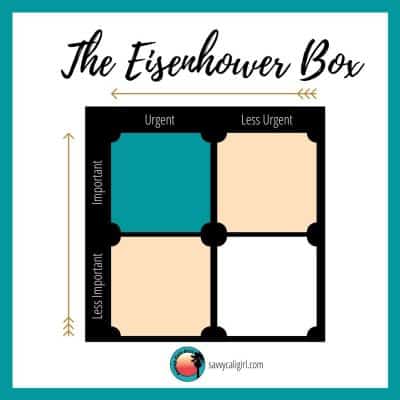
S.M.A.R.T. Goals
Tried and True Long Term Productivity Tips with SMART Goals
Everyone corporate employee rolls their eyes when SMART goals seminars roll through your department. But there is a reason for that! It’s one of the best ways to be productive and is appropriate in so many scenarios, including at home. They should always be part of a personal productivity journey.
The acronym stands for smart, measurable , achievable, relevant, and time-bound. Now, we could spend thousands of hours on the topic but is a long standing approach in business. Perhaps just a resource with further explanations and templates would be far a productive use of your time and mine. The templatelab.com is really terrific with tons of templates and details.
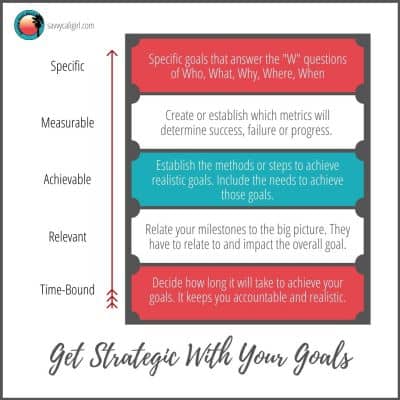
Multitasking and Productivity
Why Multitasking isn’t Effective
I was one of those women who juggled it all. A corporate job, family, friends, volunteering, hobbies and so forth and so on. While “being busy” projects an impression of importance, nothing could be further from the truth.
Being busy just to be busy while missing out on life’s big moments is sheer madness. Learning this lesson the hard way over the years was difficult to say the least. There really wasn’t “enough time” to do it all perfectly. It just wasn’t possible. At work, deadlines slipped, details were missed and I began to feel unwell all the time. By the way, stress manifests physically with headaches, anxiety and more.
Productivity is a Lesson in Simplicity
The anxiety inducing hurricane of “busy” actually reflects an inability to choose purposefully. With so much pressure to get it all done, how can you choose? Simplicity is key. Define what is truly important each day. The Eisenhower Box helps with that task.
On top of that, you have to make a decision on what is “good enough” for any particular task. Having a perfectionist for a boss and a mentor you would think would make this impossible, right? Actually, I was forced to focus on just the details that mattered.
I learned to fine tune communications, drill down priorities and deliver what was asked for instead of the entire buffet to impress. It was far less work to do one thing well in a short period of time versus a handful of things of average quality. As a team, we always asked what will move the needle? This is just a cute way to ascertain what will actually make a difference.
Managing Productivity By Reducing Obligations
Probably the absolute top hack or tip to develop is the ability to artfully decline. It may be a meeting or as simple as gossip by the water cooler. It truly is amazing how much more time you’ll have in your day or week by declining. From invitations to not volunteering when it’s not feasible. Essentially, you are balancing obligation versus choice.
How to say no is a tough skill to develop. We all want to be of service in our community, be a part of meetings that impact our work, enjoy happy hour with co-workers and so forth. If you take a moment to artfully practice how to opt out what is going to derail your day or week there will be far less chance of offending anyone.
The Art of Saying No
Remember to be enthusiastic and smile while declining. Even if you have to fake it at first. This small effort significantly decreases the odds of annoying or offending someone unnecessarily.
Additionally, below are a few ideas as inspiration.
- Would love to go to happy hour but there is a project that I really need to focus on.
- It’s been a crazy day. I would love to be invited the next time though.
- I have a deadline. Can you send questions for me and the notes from the meeting?
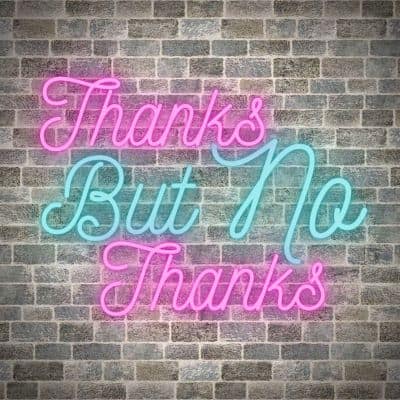
How The 80/20 Rule Still Applies
Explaining the 80/20 Principle
The oldie but goodie 80/20 Rule (the Pareto Principle) in business has been in use forever. Realistically though, the principle is sound. In a nutshell, twenty percent of your activities will account for eighty percent of your results. What does that really mean though?ales and others when my input on launch projects or inspections was far more important.
How To Apply the 80/20 Principle
As an example, if you have ten things on your to-do list, fundamentally only two of those activities will get you to closer to your goal. In an office or in sales, certain tasks get you a lot of bang for your buck. As a blogger, on post done really well will yield far better performance results than a handful of sloppy posts. It simply another way to identify what will move the needle, get a project done faster, achieve a sales goal, etc..
Okay so a little reality check for everyone! In business, the 80/20 Rule can be abused and often is! If you hold up other departments excessively by not getting any of that busy work done, your boss will hear about it, right? If you only focus on you, all the time, and damn with the rest of the departments, you’re in for a bumpy review at the end of the year. Honestly, it also means you’ve lost sight of the biggest objective, which is overall company success.

Productivity Win Balancing Sales Versus Office Duties
Being in sales and marketing for years and years, I found the balance to get a little out of whack at times. Sometimes there were weeks when it was sales, sales, sales and others when my input on launch projects or inspections was far more important.
My application of the 80/20 rules is to allow part of the week for the tasks that were not as impactful. Those things that required less brain power but perhaps just time and attention. I found I was able to focus more clearly on those tasks when I wasn’t juggling the sales drama. I did a better job with less effort and the other departments knew I would deliver on time. My productivity improved exponentially as time went on.
Productivity Tips For Getting Organized
I know, you already realize organization is part of productivity. If you are like most of us, we have developed habits that either aid in that process or seriously send our day or our week sideways on the regular. At home, it can be rough but at work it will affect your performance and ultimately earning potential.
Organizing and Managing Emails
In your professional life, what is the biggest time suck in your day? In the office it may be emails, meetings and interruptions. Working from home, it’s similar although those in-person meetings may be replaced with zoom meetings, webinars or slow speed internet. Really, staring at your screen is super frustrating!
Tackle Email Like a Pro!
While we all may be annoyed by junk mail, at least we can ignore it. Emails flood our inboxes and mixed in with the nonsense are the the actual important items. Who wants to sort through all that mess all the time? I know I don’t!
The Obvious Productivity Tips Regarding Email
- Block true spam so you don’t deal with that sender again.
- First, consciously reduce subscriptions. Unsubscribe!
- Next, if there are subscriptions that you want to dig into, but later, move them. Put them in a top level folder, away from your inbox. Perhaps, once a week or later in the day, you can deal those communications.
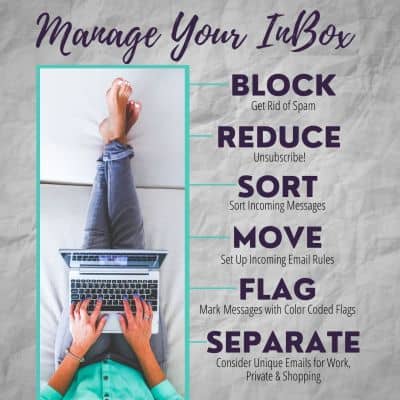
A Few Less Obvious Email Tips That Are Uber Useful
- If you subscribe to something but rarely look at it or it’s just simply inspiration, set up a rule. Your email tool can move it automatically to a lower level folder with a general name. A folder like Pinterest Inspiration for a home blogger could include ideas from your favorite bloggers or recipes you’d like to shop for later in the week, places to go, etc.. For the workplace a folder like this could be Project XYZ Updates with generalized information that is key but not urgent for the day. For home life, it might include bill notifications important for when you get paid but useless until that time.
- Use flagging to mark items to do today (Red), another day (Orange), weeks away (Blue). Maybe mark your boss’s messages with a color or your team. You get the idea.
- Have a separate email for bills, healthcare appointments or education notices like messages from the kids’ teachers and school. Have another for all your shopping needs like coupons, specials and more. Why? You will get far more spam in a shopping email inbox but will be able to keep the actual life management communications inbox cleaner.
Organize Information with Trello and Increase Productivity
As a blogger, I found organizing documents tedious. For one thing, I wanted to be able to write on the go. The formatting and access was a problem since I didn’t want to open full documents all the time. I am also inspired to write at odd times of the day and can get on quite the roll.
Accessibility Is Key to Being Productive
While being in a lockdown during COVID, made that seem a useless ask, it actually related to our travels. Being able to capture thoughts and impressions on the fly without accessing complicated or expensive applications was a must. I also wanted the same accessibility without an Internet connection. I struggled with where to keep the notes, the images, even the links for places we go or subjects discussed.
One of our contributors did a little research and we settled on a Trello personal account.
Trello is a Sticky Note Board on Steroids!
It was free and had a similar feel to the old school sticky notes on a wall feel. I am highly visual so this had huge appeal. Now, if you have never used Trello before, you’ll need a quick rundown of the features.
Our primary use is to organize ideas and draft preliminary sections for each post. We have categories like business or places to go which is how we labeled our top level boards. Each board has lists which are comprised of cards. Each card has a title, the description or draft, checklist and attachment options, and more. There are even date reminders and calendar view of items you’ve assigned dates.
This is just our example, but there are many different businesses and teams that use this platform. There are even public templates to get you started!
Organize Information with Trello
Boards

Lists

Cards
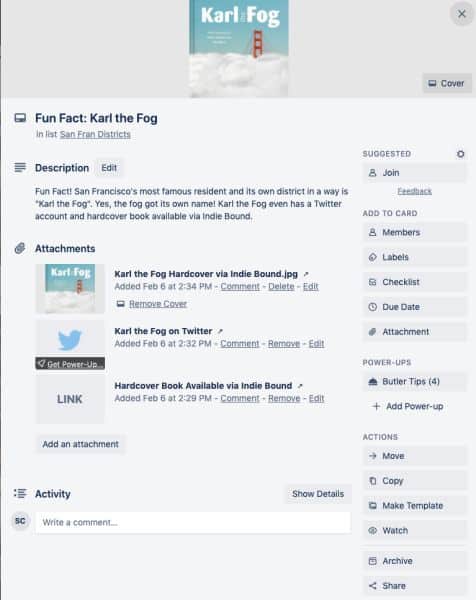
Organize Your Space

From paperwork to pens, folders, markers, supplies having a system for organization can make you far more productive. First of all, a good system means you won’t cleaning excessively.
My desk at work was always somewhat empty except for what I was working on. Why? It allowed me to focus and not be distracted by clutter.
Also, having it all organized ensured I did not miss anything critical coming across my desk. I had lots of folders floating through my department for approvals. If I delayed, it delayed another department.
I carried this through to my home office as a telecommuter and now employ a minimalist approach as blogger. I have a single folder with notes from seminars, a to-do list, a few proposals but all in all just a notepad and clear folder with paperwork. Depending on your profession, this may not utterly unrealistic but the goal of minimizing and simplifying is good one.
My Go-To Desk Organization Tips for Better Productivity at the Office
So details are important and generalities are tough to implement. Let’s dive into the deep end of the pool with desk organization. Get the paperwork and supplies under control. Really, these two items alone have the ability to take over in any setting. Below are just a few things I have done regularly over the years. They are not trendy or fads but just work with surprising efficiency.
What is Actionable?
What is reference and what is actionable? There is a difference! Have a system for both which is separate. Inboxes are typically full and important items get buried under “the pile” regularly. With this approach, really important papers can inadvertently get ignored. I always had three bins marked new, now, and soon. These words didn’t offend anyone checking our my piles and if they’re folder is under soon, they still like their folder is prioritized.
Toss, Shelve or Scan?
After tossing obvious junk, what can you scan versus shelve? In marketing, I always came across great layouts for flyers, mailers, competitive information and more. I learned to throw it all into a magazine rack for later. Some items I would scan because they had value. Others I eventually tossed. When the rack was full, I had to perform the scanning/toss task.
Skip File Cabinets if You Can!
If you can avoid a full file cabinet, please do it! Why? File cabinets take up an inordinate amount of space. They also become dumping grounds that lead to big projects later. Use portable folders or use a tote with dividers. Avoid paper folders for paperwork you have to hold on to long term. Cardboard and paper attract bugs. See-through colored folders are my go-to as I can see what something is even without a label.
Organize Your “Stuff” with Bins Inside Desk Drawers to Reduce Clutter
Your desk drawers are a massive organization opportunity! Take all those pens, cards, clips, tape and whatever else may clutter the top of your desk and get clear trays to divide it all out. If you work from home, this is super critical for shared spaces. Your drawer can be off limits to family but the desk space still shared if necessary. In an office, people are less apt to rummage through your drawers for pens or a paper clip if you are not at your desk.
A Reality Check on Lists: They Can Lead to Less Productivity
Lists are amazing and effective if you use them wisely. Truly, one of the most discouraging aspects of managing your work with lists is not completing them. On the flip side, knocking out everything on a list is invigorating. What I find super frustrating though is having to write them multiple times.
Divide & Conquer with Different Lists
Dividing up lists into a daily list versus one for the month or the week helps me avoid burnout and disappointment. For one thing, I tend to forget anything not written down but I also get anxious about not completing everything.
The solution? Two different lists I can manage separately without wasting time rewriting items.
Calendar Your Lists
You can create a list for repetitive tasks that are done each and every week or month. Calendaring those is effective for knowing when you are really busy and when you have more time in your schedule.
As an example, knowing analytic reports for the month prior are due two days after a completed month is a no-brainer. What if you accidentally commit to attending a seminar on that day? Wrong decision, right? Keeping track via a calendar list helps avoid over scheduling.
This method worked wonders in the office with managing my workload. Some days were just a bear while others a breeze. I got more accurate with anticipating when I could have a report or project completed as well.
Calendaring is my productivity secret weapon.
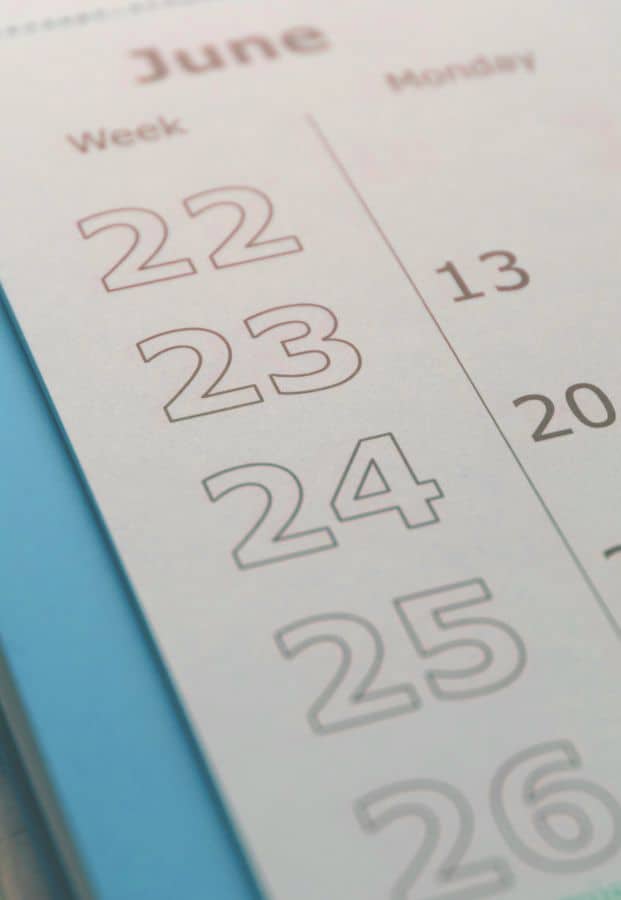
Not Inspired? Go High Tech with Your Checklist!
If you are still struggling, check out templates, printables, journals and more online. There is a wealth of ideas out there to spark your creativity. Some people even keep everything on their phone and don’t use any templates or paper at all.
Believe it or not, there are apps to help you but most smartphones come with a notes feature. Most will have an option to make a checklist which can serve as your to-do list for the day.
On the other hand, there are uber fun apps that literally do everything for you and your entire family. Cozi is an app that was far too intense for me but lots of friends use the heck out of their features. You can even make a shopping list out of a recipe. Mind blown! It also helps with different schedules for different members of the family.
The Obvious Productivity Hacks
Limit Interruptions To Optimize Productivity
Limiting interruptions is a skill for sure. There are a million strategies out there but perhaps it all boils down to answering the question, which interruptions derail your progress? Is it calls or texts, kids, a pet? Do meetings take far too long? Maybe emails suck the energy out of your morning. Whatever it is, identify it immediately! Develop a way to limit the impact on your productivity.
All well and good to know what’s keeping you from productive days and quite another to tackle those interruptions.
Social Media
- Keep notifications from that phone or computer to a minimum. If you can’t go cold turkey on your various apps, start with just one or two and work your way through as many as possible.
- Keep social media scrolling to a minimum. Set a timer if necessary. Some apps even have them built into settings you can control.
Personal Communications
- Keep notifications from that phone or computer to a minimum. If you can’t go cold turkey on your various apps, start with just one or two and work your way through as many as possible.
- Set a timer to keep social media scrolling to a minimum. Some apps even have them built into settings you can control.
Focusing
- This is a tough hill for me to climb. I need white noise to keep my mind from wandering. Since I work from home, I have been known to have educational programs on the television in the background, movies I’ve seen a hundred times, even a news channel at a super low volume. Why? Too much quiet and my mind wanders, too much input and I can’t focus.
- Also, music keeps my energy up so I use my ear buds regularly. I have playlists from Apple Music or Pandora going strong during creativity sessions. Making Pinterest pins or scheduling social media for the week are prime for music motivation. If no one is home, I’ll play it on a speaker. When I worked in an office, I listened to music with my buds to avoid all the conversations outside my office.
- Reduce the tabs open on your computer. For one thing, it slows you down because it slows your computer down. Additionally, finding what you need in and amongst all those tabs, gets frustrating. Keep the tabs to related to what you tasks you’re working on in that period of time.
Training Up Increases Productivity
Training up is one of those things makes people feel insecure. Meaning, if you train someone really well to do a task you have responsibility for, it means you could be replaced right?
Possibly, but in reality, you are mentoring another person who will be grateful for an opportunity. Additionally, you will free up time or space to do a task your boss would appreciate your help with. Also, if there is never time to take a training or seminar your boss has suggested, aren’t you just holding yourself back?
If you have a very routine driven profession, training up is a nice way to change that up monotonous vibe. And let’s be honest, boredom is anti-productive!
Why Trusting Is Central To Productivity
Having worked in a variety of scenarios, the absolutely least productive environment had to be in a situation where everyone did everything differently and no one would train another person. Clients came in and never knew what to expect, often leaving frustrated.
It turns out, employees didn’t trust each other and it trickled from the top down. Imagine having a boss who refused to show you anything and berated you for not knowing. Walking into that environment early in my career profoundly impacted how I conducted myself in future positions.
What did I do? First, I always made sure that everyone felt valued. Next, if they were willing to learn, I was willing to teach. Last, if there were questions, I encouraged everyone to always ask, no matter what. Now. there will be a slight slow down in productivity in training someone but in the long run, you gain that time back tenfold.
Productivity Plans for the Unplanned
Every week, there are life moments that threaten to disrupt the productivity you’ve got going. How do you avoid those moments? To be perfectly honest, it’s not realistic.
Anticipate that there will absolutely be interruptions to your schedule. Not only will business throw curve balls on a regular basis, but we all get sick occasionally. Family emergencies happen, a pipe breaks at home, there is an award at school no one mentioned but you’ve got be there. Really, this list could go one forever.
Building in what I call “cushion” by working ahead and anticipating future projects, upcoming deadlines has saved my butt umpteen times!
Save Your Sanity By Looking Ahead
Maybe because I was in the business of discovering new markets outside the United States for our products, I was always planning ahead. I was expected to anticipate what was next. This mindset just enabled me to think outside the box habitually.
In practice, just start with what’s going on in the upcoming weeks. Prep accordingly. If you a content planner, you could loosely lay out the year ahead with potential material or concepts. Perhaps in an office, everyone always goes out sick with the flu around December and January. What can you work ahead of that time in order to not fall behind?
You get the idea, right? Think ahead all the time!
Taking on Big Stuff While Keeping An Eye on Productivity
Some projects are overwhelming and seem just too big to get started. Like all milestones, they don’t happen in a single day or week. Really, college is fours years long. If you thought about in terms of everything you have to do during those four years, you’d likely give up right away. It’s a lot!
Projects can feel like that as well. If you take baby steps, however, it may not be so overwhelming. Incorporate those steps into the tasks you have planned for the weeks and months ahead. You can choose to climb any mountain and it just takes a plan and taking those first steps to get started.
Implementing Baby Steps on My Own Blog
When I needed to update the styles of posts, modify keywords, implement AMP pages and make other minor tweaks I was overwhelmed for a moment. I decided it was important and an organized plan was in order.
Without much effort, I threw a spreadsheet together listing each post. Next, I listed column headers with what needed to be done and also critical information on each post. I methodically update posts with AMP versions every week. And while there is more to do, the speed of the mobile is now within an acceptable range and improving each week.
This may seem like a waste of energy but I assure you it’s not! In fact, this one spreadsheet and resource now saves me time everyday. To be able to just look at key information for each post, monitor performance, update keywords within posts or not repeat keywords or key phrases, even just add observations or fixes needed is magnificent!
Using Schedulers Increases Productivity
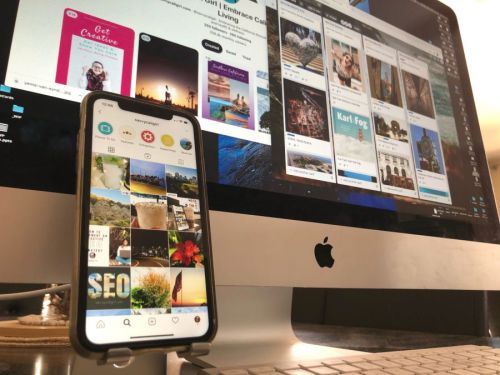
Schedulers are a godsend if you use them properly and with thought. They can also be relatively inexpensive and in limited situations, free. The apps are useful for managing social media platforms and distributing content to those platforms. Schedulers allow you to strategically publish content at the right time with less effort. Most also have analytical tools available to know how content is performing.
That being said, most platforms require a level of engagement to be successful. Schedulers are not going to do this for you typically. It still falls on you as a marketer, blogger, or social media manager to like, comment, and participate.
So why use schedulers?
They take one manual task off your already full plate by scheduling out content strategically and even automatically in some cases. This is a productivity win!
For Savvy Cali Girl, writing posts is our primary focus but what is the point if posts are never seen? The schedulers allow us more time to write while scheduling our content with less effort to Pinterest, Instagram, Twitter, Facebook, etc..
Now, we could go into a full review of each and every scheduler out there but this report encompasses a majority of them. We are still testing various schedulers for use with blogs but Tailwind for Pinterest has saved us a lot of time this year, especially with all the changes on that particular platform.
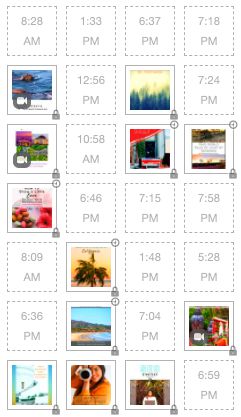
More Posts Related To Productivity
I certainly hope that some of these concepts, approaches, techniques, tips or hacks has helped in some way. While some are conceptual, some are quite specific and applicable right away. We have additional resources that relate to productivity available including Working From Home, Productivity At Home, and Teamwork Tips.











I always try to multitask but it never seems to work out haha! I have never heard of the Eisenhower Box before now but I am definitely going to be trying it out! Thanks so much for the post.
Thank you for checking out our post. Multitasking is an ill-conceived approach because it never allows for focus or thought. You just keep buzzing like a bee but there is always more and more. Eisenhower just breaks the cycle for me and I feel more in control this way. Good luck and let me know how it goes!
This is a fantastic roundup of productivity tips, especially for those of us who are trying to balance working remotely for the first time! I’ve tried out a few of these before, such as using schedulers and trello for organizing my work and they’ve definitely helped keep me organized. I’m really interested in trying out the Eisenhower Box to see if I can prioritize my time better.
The Eisenhower Box is something you can do eventually by instinct. At first, writing the tasks into each box is like training your brain. It also makes the day far more clear as to what actually needs to happen versus everyone else’s expectations or the wishes for the day.
The Eisenhower Box is something you can do eventually by instinct. At first, writing the tasks into each box is like training your brain. It also makes the day far more clear as to what actually needs to happen versus everyone else’s expectations or the wishes for the day. Thank you for reading our post!!